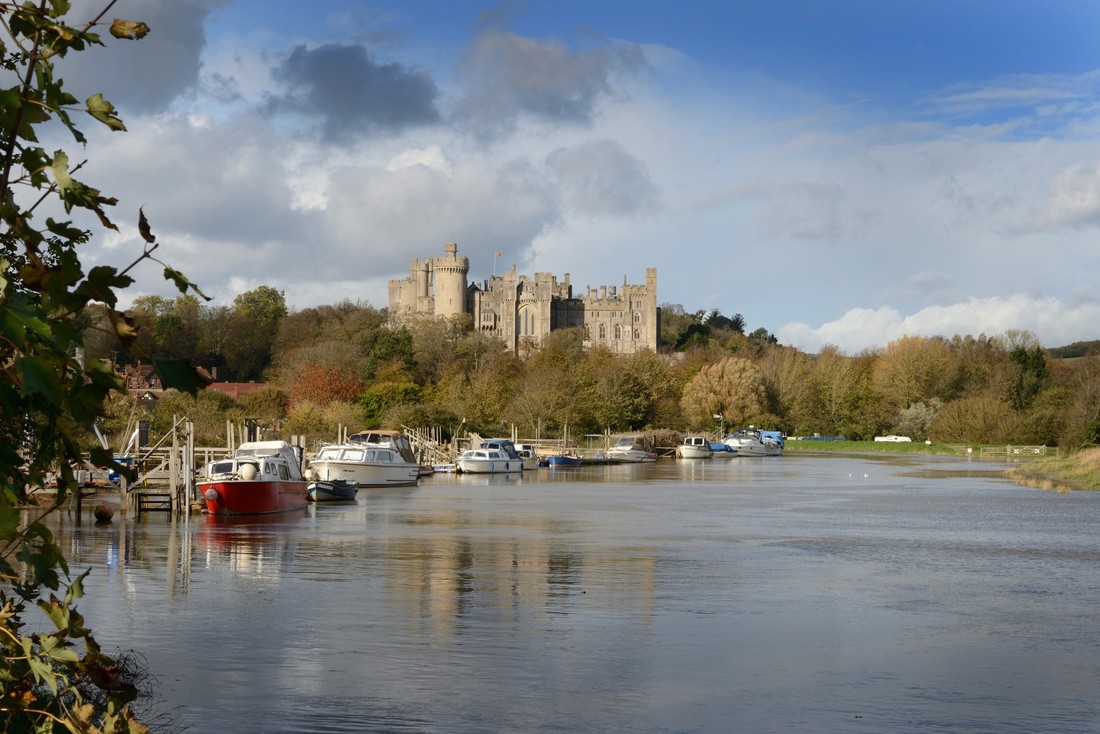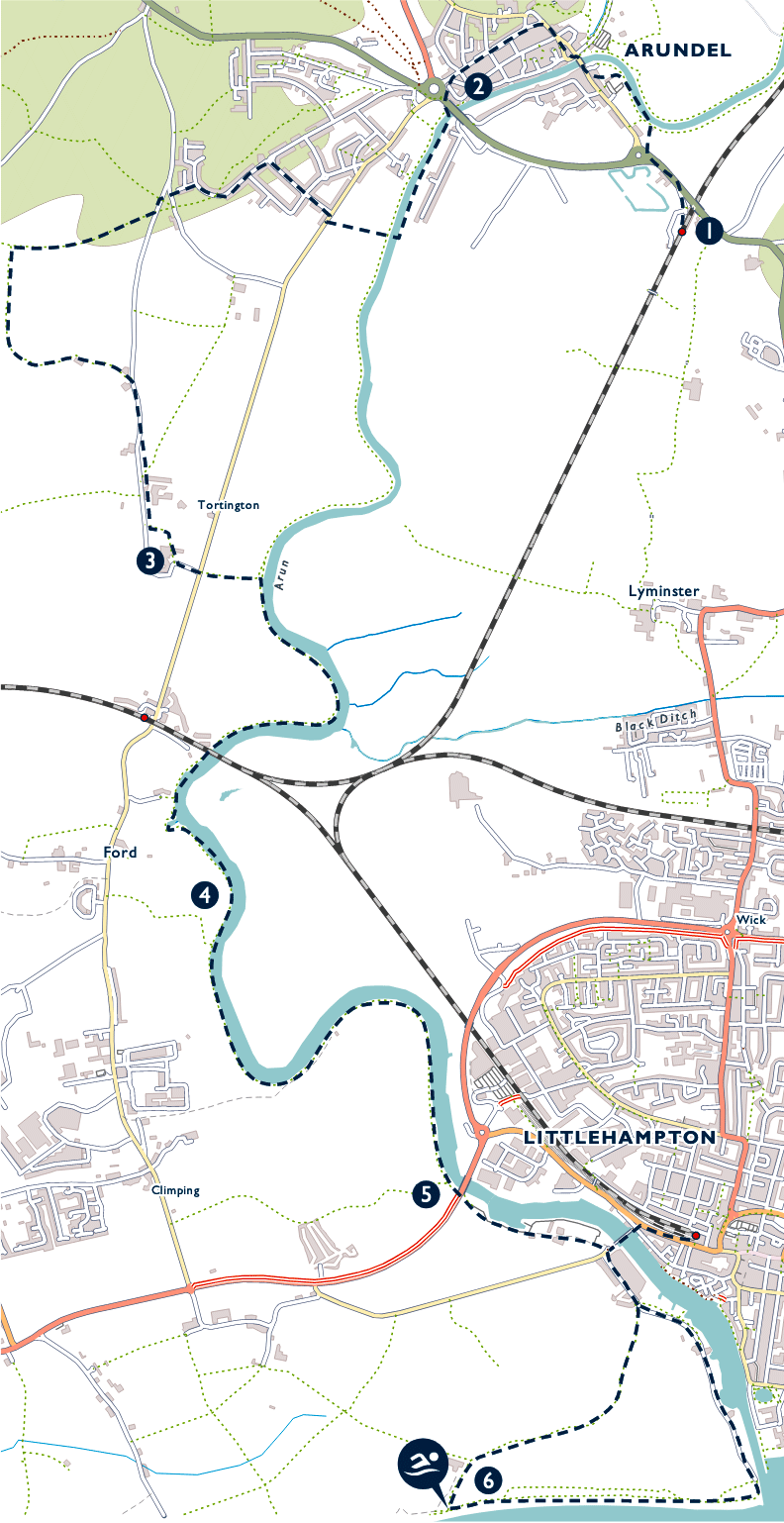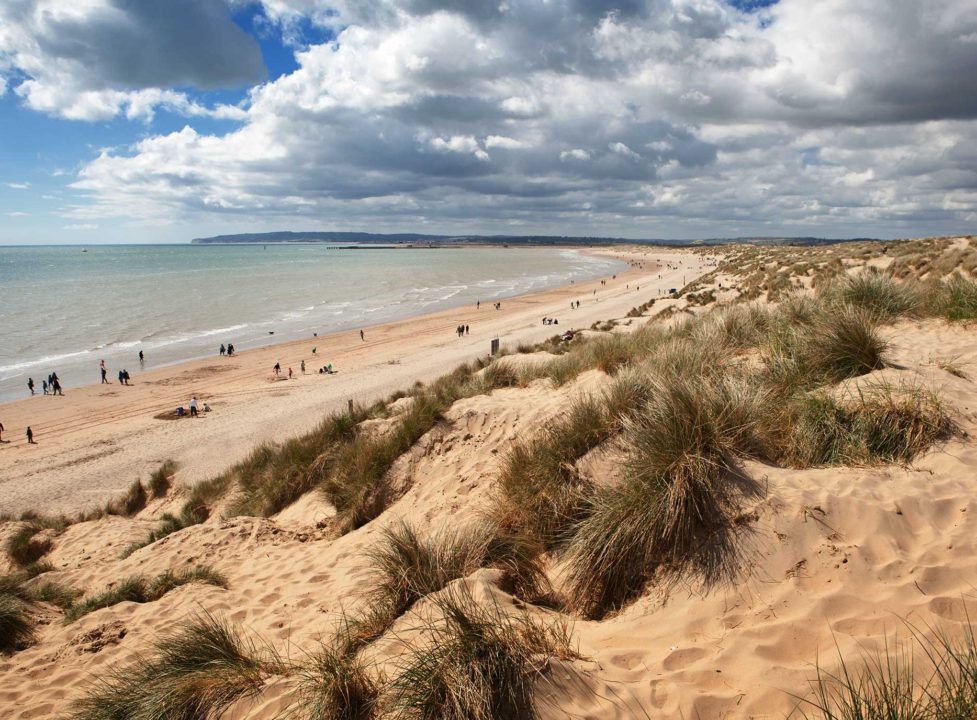On Sunday 28th July Brockwell Swimmers will be catching the train to Arundel for another splendid adventure from the Wild Swimming Walks book, Number 28, from which the following text is taken.
We strongly suggest you book your train ticket NOW to ensure a seat. You will need to buy two singles: the 8:32am from Victoria to Arundel; and the 18:14pm from Littlehampton to Victoria. At time of writing this cost £37.90 (including booking fee). Meet at Brixton tube 7:30am or the Victoria barrier at 8:15am.
Starting with views of Arundel castle, this walk takes in ancient woodland, Norman churches, the River Arun and a sea swim at a marine nature reserve.
Arundel lies on the south side of the South Downs, where the River Arun has cut a clear way through the chalk hills, providing a natural route south. The town dates back to Roman times and by 1066 was a busy market and port. The famous castle has been ruined and rebuilt several times so the building you see today is mainly 19th century. Near the town bridge are ruins of a 13th century Dominican friary and the 14th century church of St Nicholas. If you take Maltravers Street, look at number 8, the remains of a three-bayed hall house with a timber frame roof, and number 79 with a similar roof.
From the 16th century a series of navigational improvements made the river navigable beyond Arundel and increased the town’s importance as a port. Eventually, in 1816 the Arun and Wey Junction Canal was opened, providing a navigable link via the Wey and the Thames all the way between London and the sea at Littlehampton, but the route was never as profitable as hoped and closed in 1871. By then the railways were eclipsing the waterways and Littlehampton took over as the port on the Arun.

After leaving Arundel the walk heads south towards the sea over fairly flat land with distant views of the Downs. Much of our route is beside the tidal River Arun, but at first the walk branches away over higher ground to pass through the remains of an ancient forest at Tortington Common.
Two remarkable early churches are worth stopping for. St Mary Magdalene in Tortington is predominantly 12th century, connected with the now ruined Tortington Priory, and is known for grotesque carved figures. Look for the carvings over the door and the ‘beak heads’ over the chancel arch – strange monsters with beaks, tongues and squid-like tentacles, which would originally have been brightly painted. In the north aisle there are two fine Kempe Studio stained glass windows from 1896. The second church, St Andrew-by-the-Ford, is part Saxon, part Norman and has remains of medieval wall paintings. There are good leaflets giving more details on sale in both churches.
Confident, strong swimmers may consider swimming in the Arun near Tortington. There is a famous annual event, the Ironman Swim between Ford Marina and Arundel, but that is a very different affair from a casual dip. Swimming in the river is only feasible at very high tide and even then conditions are daunting. The banks are reinforced with concrete, which is good for entry but makes getting out up a smooth and potentially slimy slope quite tricky. The tidal current is very strong, so that unless the tide is exactly on the turn swimmers may find it impossible to return to the spot where they entered. If everyone in your party wants to swim, make sure someone tests the ease of getting out unaided before all the others plunge in.
 The walk reaches the sea to the west of Littlehampton where the shoreline is open, backed by areas of shingle, marsh and sand dune, which is a nature reserve. The area seems to be popular with walkers but is rarely crowded. On one occasion, under a hot summer sun when the sea reflected back a blazing, blue sky, we were surprised to find the warm beach relatively empty. Another time, on a blustery November day when the waters were a shifting mixture of grey-browns, we were almost equally surprised to find that we did not have the windswept beach entirely to ourselves.
The walk reaches the sea to the west of Littlehampton where the shoreline is open, backed by areas of shingle, marsh and sand dune, which is a nature reserve. The area seems to be popular with walkers but is rarely crowded. On one occasion, under a hot summer sun when the sea reflected back a blazing, blue sky, we were surprised to find the warm beach relatively empty. Another time, on a blustery November day when the waters were a shifting mixture of grey-browns, we were almost equally surprised to find that we did not have the windswept beach entirely to ourselves.
The sea swim is good between high tide (12pm) and mid tide (3pm). There is a sloping, shingle beach with a nearly flat expanse of sand below it. At high tide you swim off the shingle slope, which may be tricky if the sea is rough. Around mid tide the sand makes for a more comfortable entry, but when the tide is lower still the water becomes too shallow and remains so for a very long way out.
Don’t forget to book your train ticket now.
Participants take part in these events at their own risk. For full details click here.


